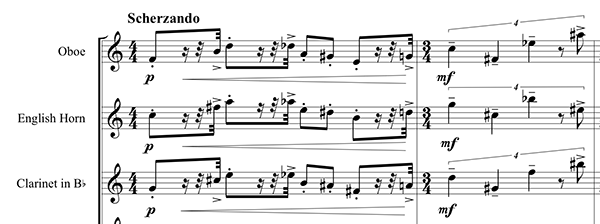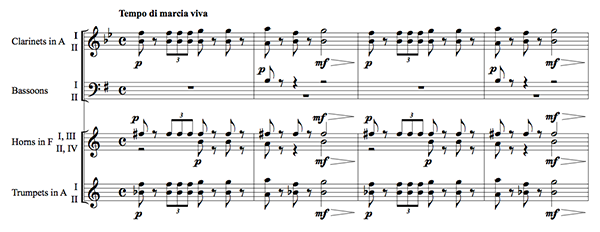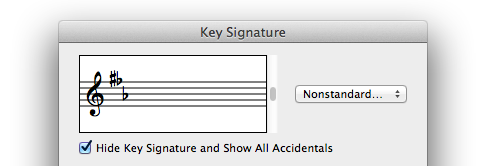
While Finale has always been able to create the appearance of a keyless score, in the past it required some creative work-arounds. Although beautiful scores are produced this way, extra time and know-how is required. Finale 2014 not only makes the creation of keyless scores “one-button easy,” its implementation also offers great flexibility and power, and today I’d like to share some of the details.
With Finale 2014, you can now easily create:
- A keyless score
- One or more keyless staves within any score
- One or more keyless measures within an otherwise keyed score
While creating a new score, Finale’s Setup Wizard lets you simply choose Keyless Score:

No key signatures will appear on any staves, yet transposing staves will still transpose. In addition, should you subsequently add a keyed section in this same piece, you can copy music to or from the un-keyed section without it automatically transposing as it would in a fully keyed score.
Another option, also found in the Setup Wizard, is to specify a key and check “Hide key signature and show all accidentals.” This allows you to control which enharmonic spellings appear by default. For example, if you’re entering notes with MIDI, and specify a “hidden” key signature of Bb, if you play MIDI note 63, it will notate as Eb instead of D#.
While the Setup Wizard lets you specify a keyless score, what if you want only certain staves to be keyless? The following Tchaikovsky score offers an example of a fairly common scenario where some transposing instruments are keyed, while others are not:

To produce something like the example above, create a keyed score, then use the ScoreManager to quickly configure individual staves. Simply click on the stave you wish to edit and specify Transposition: None. Again, you also have the option to select “Hide key signature and show all accidentals.”
Finally, you can use the Key Signature tool to change selected measures. The controls offered in the Key Signature tool look very similar to those in the Setup Wizard, but they also offer the option of Non-standard key signatures, which can be used in conjunction with “Hide key signature and show all accidentals,” for further control of enharmonic spelling, as seen in the following “C Hungarian Minor” example I borrowed from Jari Williamsson’s Finale 2014 review. Below you can see a Nonstandard key signature I created:

Having done this, I selected Simple Entry and typed c, d, e, f, g, a, b, c on my QWERTY keyboard, and was delighted to see the following automatically appear:
I hope this post shares my sense that the new Keyless Score options are the product of a lot of thought and careful consideration of multiple workflows. Please let me know if you have any questions, and if you’re using this aspect of Finale 2014, please let us know how it’s going.